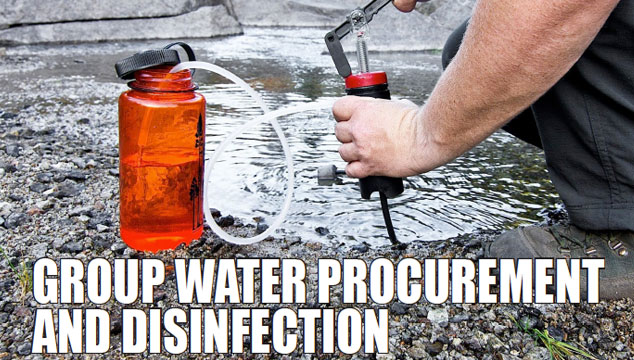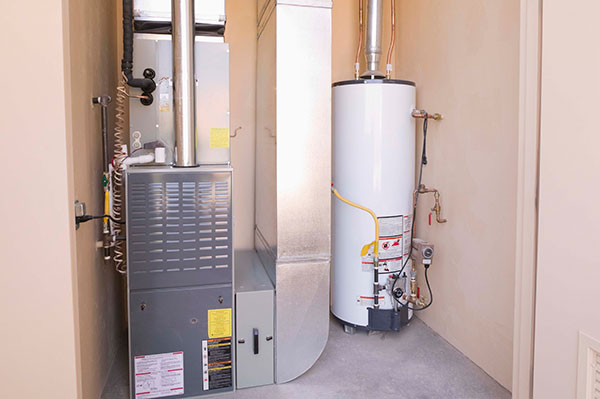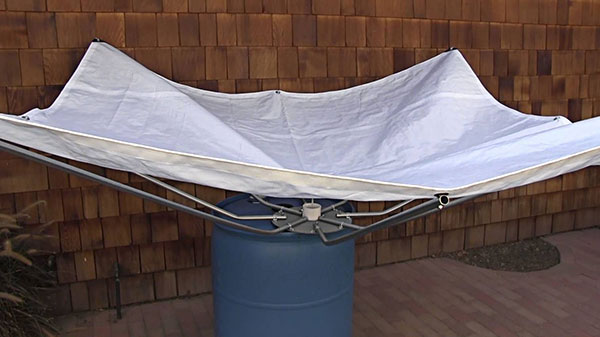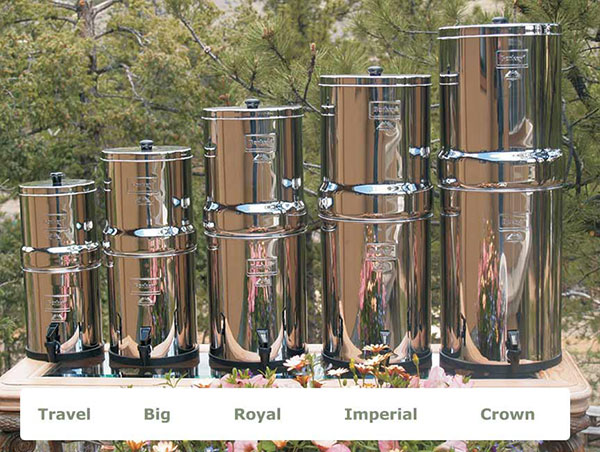
The FEMA guidelines for emergency water needs is 1 gallon per person daily. This meager ration of H2O still becomes a large volume of water when multiplied by the group number. That’s way too water much to run through a backpacker’s hand-pump water filter. It will be one hell of a culture shock for the average American that is accustomed to using 80-100 gallons per person each day. One gallon per person per day is meant to provide the bare basics. This is drinking water, cooking water, brushing teeth, a frugal handwashing. If you’re lucky, also a damp washcloth wipe down instead of your normal 50 gallon hot shower. No matter if you’re rationing or not, there are two major water hurdles. They are getting the water and then making it safe to drink.
Find Some Water
People merely dipped their water buckets into the local creek and drank the water in olden times. They also frequently died of dysentery in the good old days. Little has changed in the rougher parts of the world. Even today, the World Health Organization reports that waterborne diseases cause about 1.5 million human deaths annually. To keep your group healthy and hydrated after the faucets stop running, start by collecting water from the best available sources.
Hit The Water Heater

The hot water heater is a large water reserve that few people tend to remember. Small units hold about forty gallons and larger models carry twice that amount. Start using this water first in a crisis as it’s not healthy to let the warm water sit for too many days.
Empty it from the bottom drain by using a shallow cooking pan to collect the water. Discard the first water you pull out, as it often contains rust and sediment. Turn off the electrical breaker if it’s an electric unit and you still have power as the heating elements will burn up in an empty water heater.
Catch The Rain

If the crisis doesn’t include an NBC (nuclear, biological, or chemical) aspect or other air polluting event, the rain may be a viable source of water. Most homes have a ready-made catchment system with the roof and gutters. One inch of rain yields over half a gallon of water per square foot of collection surface. This means that a brief rainstorm can yield hundreds of gallons from the average roof.
Of course, you’ll have to disinfect this water due to all the dirt and bird crap on the roof. You can also collect other forms of precipitation. Scoop up ice, sleet, and hail. Melting snow is a viable option as well.
Use Surface Water
Springs, creeks, streams, rivers, lakes, ponds, and even freshwater swimming pools can all be practical sources of water. Of all of these, a natural spring is the best. No matter how clean your surface water may look, treat the water as if it were contaminated by harmful organisms and in need of disinfection. Use a designated “dirty water” bucket to bring it back to your camp or home.
Make It Safe
Once you’ve acquired some water, disinfect it to protect your team. There are many different ways to disinfect your water. The following three make the most sense in a grid-down group setting:
Boil It

This ancient water disinfection technique is an oldie but a goodie. Bring the water to a rolling boil for at least five minutes, although ten is better. Boiling kills the four main groups of dangerous water borne organism which are viruses, bacteria, parasitic worms, and protozoa.
Boiling is still effective when working with muddy water, though the technique has its limitations. Boiling won’t remove salt, radioactive particles, heavy metals, and other contaminants. Distillation will remove all of these from water but it’s a far more complicated set-up.
Filter It
Group sized filters are great options when you’re not dealing with muddy water. You’ll find carbon filters, hollow fiber filters, and ceramic filters on the market. These are available as bag filters that allow you to hang up a bag of dirty water that gravity feeds through a filter cartridge. Another gravity fed option is the table top unit. You pour raw water into the top compartment of the filter then it drips through the filter cartridge into a holding tank below.

I have a Big Berkey like this that is easy enough for even the kids to use. Katadyn and Lifestraw are also popular brands that make these canister filters designed for groups. You could also choose a hand pump unit from a variety of manufacturers, in a variety of sizes from personal use to group applications. The main difference between the filter cartridges is this. Carbon filters remove most pathogens and many contaminants including chlorine, lead, iron, copper, and other not so tasty elements.
The drawback is that they’re easily clogged with muddy or silty water. Fiber filters are made from hollow synthetic fibers that are great at screening out pathogens but not pollution. Fiber filters can generally be backflushed to clear clogging. Ceramic filters don’t remove much pollution but tend to be a little better at pathogen removal. Ceramic filters are generally able to be maintained in the field, offering a much longer lifespan and resistance to sediment clogging. The best ceramic filters have silver particles embedded in them. The ceramic screens out the larger pathogens, and the silver kills the little ones like viruses.
Treat It
Chemical water disinfection is exactly what’s happening to municipal water supplies. You can perform your own small-scale version of the operation. For individuals and bug out bags, you can purchase chemical disinfection tablets. Use either iodine or chlorine based tablets for disinfection on a very small scale.

For a group, a simple solution is to use ordinary household bleach to disinfect water. Read the labels before you start dosing out chemicals. Ordinary bleach is 5.25% or 6% sodium hypochlorite and it can be used for disinfection at a rate of 2-4 drops of ordinary chlorine bleach per quart of water.
However, many manufacturers of bleach have gone to a concentrated bleach solution that is 8.25% sodium hypochlorite. If this is the case with your bleach, keep the minimum dose as 2 drops per quart and lower the maximum dose to 3 drops per quart. As a rule, colder water needs a little more bleach than warm water. Muddier water needs more bleach than clear water. Calculate and then double check the numbers to figure out how many drops of bleach you’ll need for the volume of water.
Shake or stir the container for a minute once the bleach is added. Use a cloth and some bleachy water to wipe down collection container exteriors plus any surfaces that may have had raw water splashed on them. Cover the container and set it in a dark place, or at least in the shade, for one hour. The bleach will kill most or all of the pathogens in that time and make the water safe to drink. Pour it into a water carrier or cooler with a spigot, and you now have safe running water again. Use it wisely.
Final Thoughts
Water is one of the highest priorities when the SHTF. That fact doesn’t change if you’re with a group. It’s vital that you have enough water for everyone and that it be safe to use. With some forethought, you’ll have plenty of usable water for everyone.
